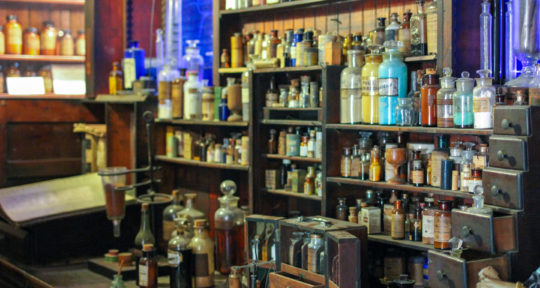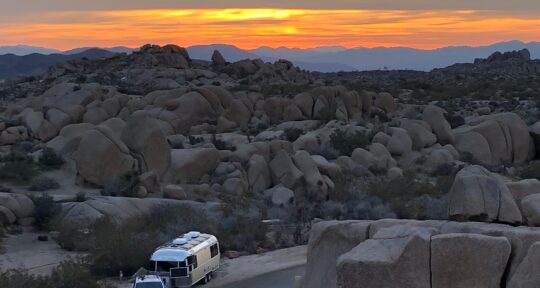I have seen the sign for the National Mississippi River Museum & Aquarium many times when crossing into Iowa from my home state of Illinois for various road trips over the years. Today, however, I’m finally stopping in Dubuque: I want to see an alligator in eastern Iowa.
In addition to alligators, the aquarium promises otters and an incredible amount of fish. I’m also interested in learning more about the river itself. I know very little about the Mighty Mississippi beyond what I learned from reading Mark Twain and taking elementary school field trips.
Wendy Scardino, director of marketing and communications for the museum, says that the museum regularly welcomes visitors from across the country and all over the world. A lot of travelers stumble upon the museum just like I did—by following the sign near the river. The Iowa museum is not the only one dedicated to the second-longest river in North America, “but we are the most comprehensive [river museum] in the country,” Scardino says.
More than a museum
When I arrive at the National Mississippi River Museum & Aquarium (the Smithsonian affiliate is commonly referred to as the “River Museum”), I discover that it’s much more than just a museum and aquarium. Scardino says that the museum operates according to a “three-legged stool” model, and emphasizes that it offers something for everyone. “We focus on history, conservation, and STEM (science, technology, engineering, and math) education,” she says.
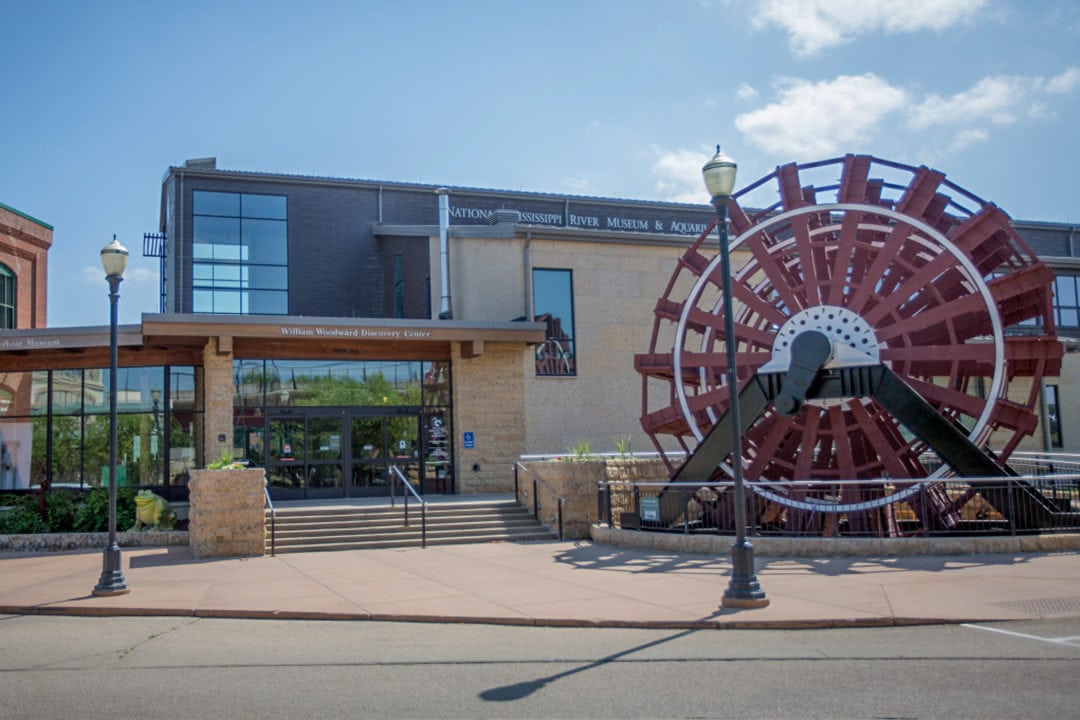
Tickets include options for add-ons such as 3D and 4D films, and a stingray feeding. The sprawling 14-acre complex features two large buildings, a boat launch, aviaries, and more.
I work my way through the first building, the National River Center, which features three galleries. The Rivers to the Sea Gallery features three aquariums and a science lab full of artifacts. I’m most in awe of the Gulf of Mexico aquarium towering over me; filled with beautiful fish, it’s an immersive experience.
Labs and locks
Scardino says that the museum is always looking to acquire new items so visitors have a unique experience each time they return. At the conservation lab, I get an up-close look at the aquarium’s logperch propagation efforts (the river fish is native to the eastern U.S. and parts of Canada). The RiverWorks Splash Zone is a STEM-friendly experience for people of all ages; I learn more about rivers by “steering” small boats through locks and attempting to identify various animals native to the river and surrounding wetlands.
Animals are the biggest draw for visitors at the River Museum, Scardino says. That’s what gets people in the door. “When they leave, it’s a different story,” she says, noting the popularity and glowing reviews written about the museum’s displays on river history, Native American artifacts, the National Rivers Hall of Fame, and more.
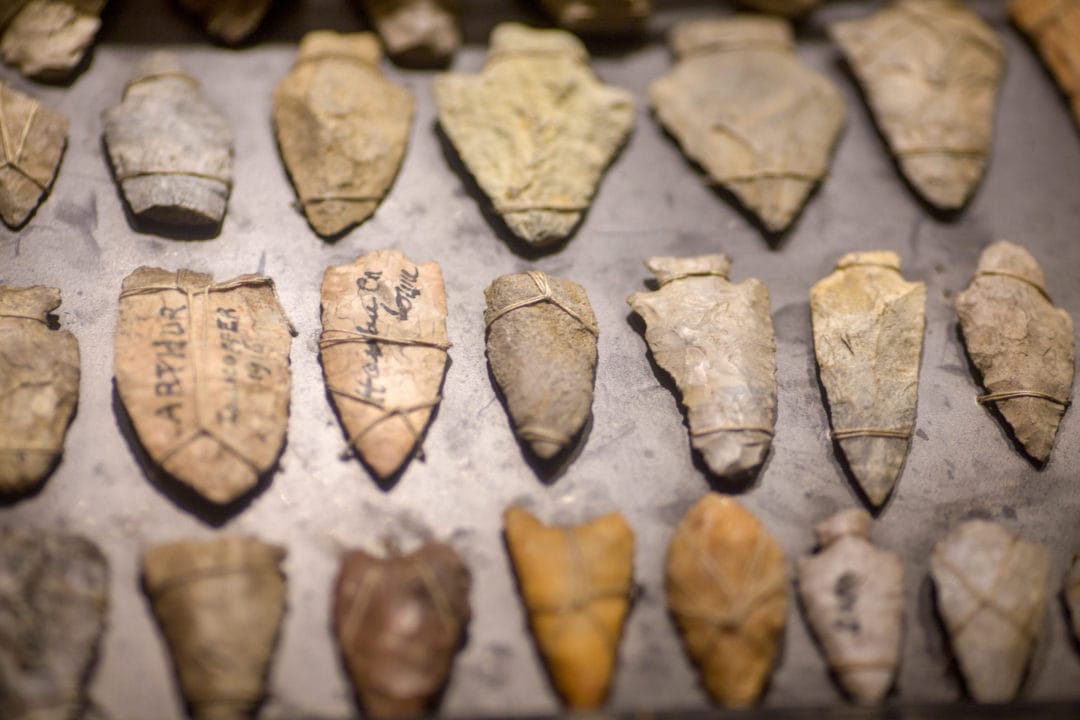
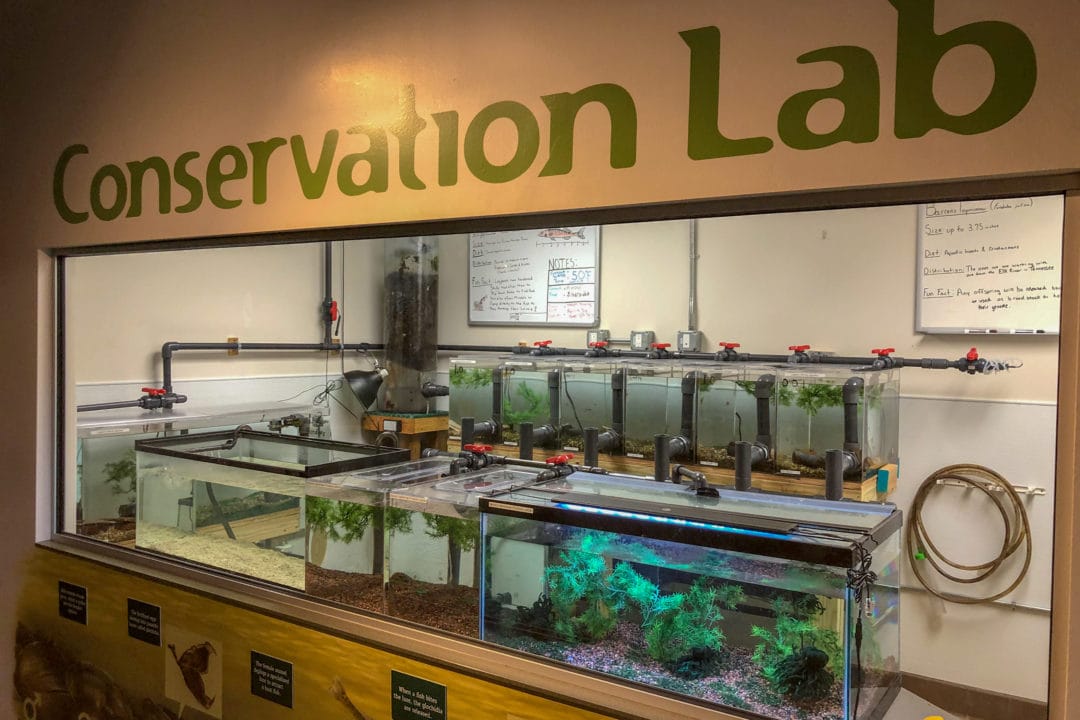
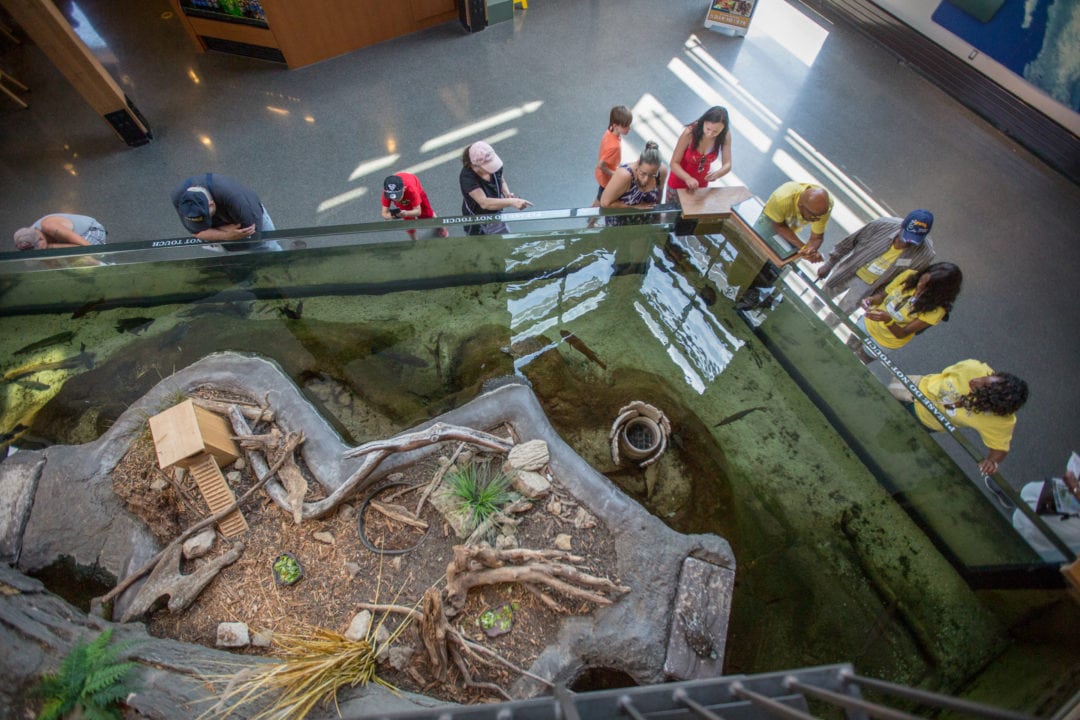
“I’ve been to many science aquariums and museums,” Scardino says. “But there are no [others] where you can get a little bit of each of those experiences in one place. We stand alone in that regard.”
579.5 miles
I leave the first building and head in the direction of the second, the William Woodward Discovery Center. On my way, I weave through the Logsdon, a historic towboat, and stop to admire an eagle in the aviary. I investigate various architectural pieces related to the river, including giant propellers from a dredge boat that rise from the grass lawn like large art installations.
In the distance I see a large, square, neon green sign with the number “579.5” posted above it—the museum’s river address. “You are now 579.5 miles upriver from where the Ohio River pours into the Mississippi,” the sign reads. It’s a river dweller’s version of interstate mile markers.
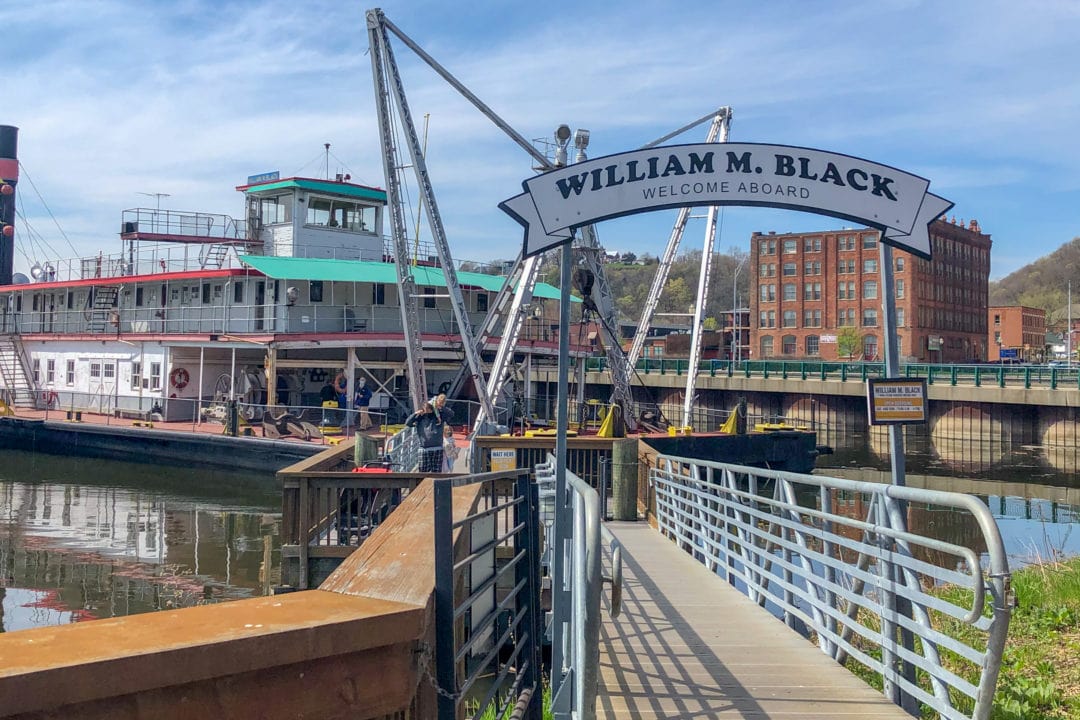
As I stand near the shore of the river, staring at a large ship floating gently on the water, a man on the boat waves me over. “Welcome aboard,” he says as I walk onto the William B. Black, a 277-foot-long dredge boat. This steam-propelled museum ship is open daily to visitors, and is one of just a few of its kind still in existence. It was designated a National Historic Landmark in 1992, and visitors can take a self-guided tour. I wander around, examining all three decks. I only lose my way once.
Alligators in Iowa
As I walk off the boat, I step back and take in the view of the river. The shiny, silvery water moves smoothly. I take a deep breath of fresh air and follow the sound of chirping birds to my next and final destination. The William Woodward Discovery Center is an especially family-friendly building, featuring historical exhibits and six interactive aquariums, offering up-close views of giant catfish, longnose and alligator gar, and many other species of fish.



The crowd favorite, by far, is the river otter aquarium, where families gather in large groups to catch a glimpse of the “water cats.” They glide, grin, and seem to really thrive on the crowd’s attention.
When I finally find an alligator—native to the southern portions of the Mississippi River and once considered an endangered species—we make eye contact as he slides along the bottom of a very large aquarium tank. Maybe I’m mistaken, but I swear he winks at me before he disappears into the darkness.
If you go
From May 29 to October 31, the National Mississippi River Museum & Aquarium is open daily from 9 a.m. to 5 p.m. From November 1 to May 27, the museum is open from 10 a.m. to 4 p.m. Monday through Friday and from 10 a.m. to 5 p.m. on Sundays.

